
We collect basic website visitor information on this website and store it in cookies. We also utilize Google Analytics to track page view information to assist us in improving our website.
Written by: Summer Graham
If you find yourself constantly heading to Google to search for answers about native plants, then today is your lucky day! We are tackling some of the most searched questions about native plant species - what they are, what they do, why they are good, and where to find them!
First off, what does it even mean to be native? The question of whether a plant is native or introduced may differ depending on the source you are using and which geographical area you are referring to. For example, a plant can be native to Canada, but not native to certain provinces (e.g. Manitoba Maple). You may have noticed that some sources even differ in their display of native species ranges.
The term native is defined as “of indigenous origin or growth”. Native species are therefore defined as those which originate from a given area prior to human intervention. These species have evolved over thousands of generations as part of a cohesive ecosystem alongside other native wildlife and have adapted to the environmental conditions present in a region.
Most species deemed “non-native” or “invasive” to an area are often brought through human intervention, many of which can be timed to European settlement of North America. Think Common Buckthorn brought to North America to be a hedge tree, and Garlic Mustard introduced as a food source for European settlers. Not all non-native species were brought over intentionally however, Zebra Mussels hitched a ride in ballast water, and Emerald Ash Borer is thought to have come to North America on wooden shipping pallets.
Overall, it can be difficult to trace a species origin and in a changing climate, species ranges are constantly moving. This leads to much debate over what is truly a “native” species.
Native plants provide a wide variety of benefits, including: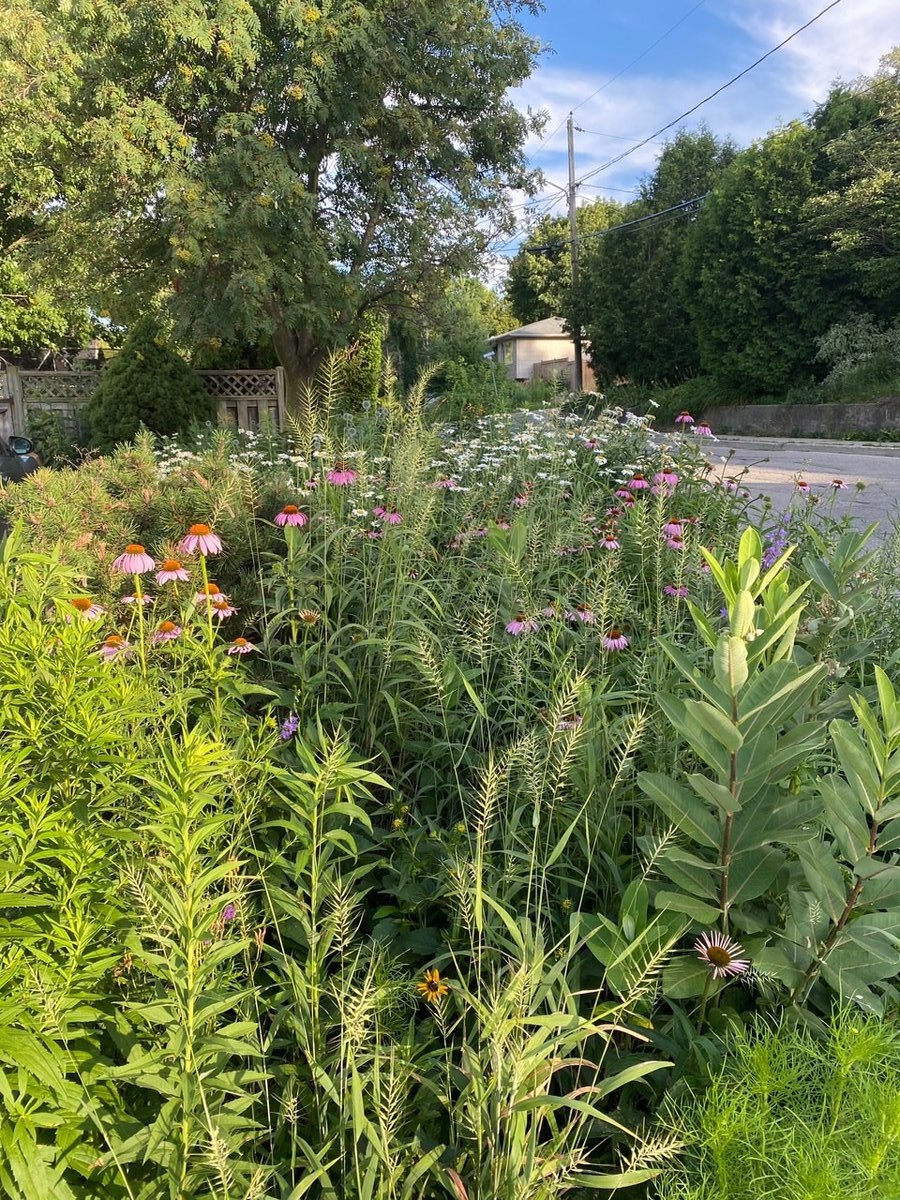
Like all plants, native plants require specific conditions to grow and thrive. Some species will do better in specific conditions (specialists) while others will be able to survive a variety conditions (generalists).
Levels of sun, and water, temperature requirements, soil preferences, and nutrients needed can vary greatly between species, and even within species growing in different regions. It is important to assess your site or garden prior to selecting species, so you can closely match the species you choose to the conditions you have! This will make it easier for your plants to establish without as much work from you.
Planting native trees at the Toronto Zoo Mini Forest - Madigan Cotterill/CanGeo
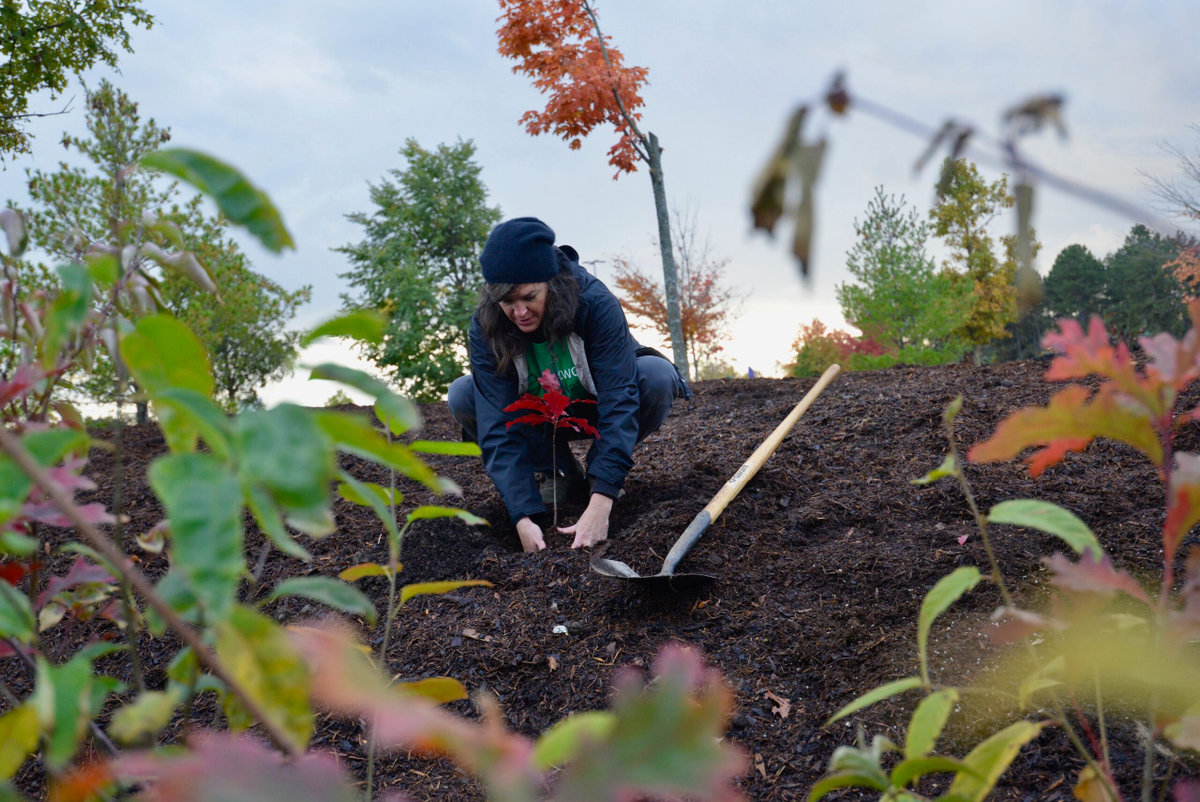
Native plants help the environment in a variety of ways, with one key impact being the restoration of degraded areas into natural ones. This helps to support local wildlife by providing food and habitat. Growing native plants in the proper conditions can also reduce the need for pesticides and fertilizers, which can cause harm to waterways if not used properly and allowed to run into streams or rivers.
Native plants are often promoted as being “better” for pollinators, but what exactly does this mean? Unlike introduced, non-native species, native plants have evolved alongside native wildlife for many years. This means that the wildlife have adapted to maximizing the benefit they gain from native plants, and native plants have evolved strategies to be pollinated or dispersed by native wildlife. In some cases, it has gone as far as a wildlife species needing a single type of plant for an essential part of its lifecycle (like how Monarch butterflies cannot reproduce without Milkweed). Native plants also provide the right nutrients for native species, with some studies finding that native pollinators get more energy from native pollen and nectar, reducing the amount of energy needed to collect food.
Native plants will follow the proper flowering cycle for their local climate. Some nonnative species will not bloom for as long, or at the right time, to support peak pollinator populations. Ideally, your pollinator garden will include native plants that bloom in early spring, species that bloom in summer, and late blooming species for fall.
Plants that are native “for your area” will obviously depend on where you are! There are many resources online and field guides that might be able to help, or you can visit our plant database and filter for your location to find species with the same native distribution! It is currently only possible to filter for species by province or territory, but keep in mind that a species suitable for the Carolinian range in Ontario won’t be suitable for the far north of the province, and vice versa! Look to local forests and natural plant communities in your area for an idea of the types of species that grow well wherever you are.
When selecting species to plant in your yard, remember that conditions matter! Just like any species, native plants have specific soil, sun, and moisture considerations. Carefully considering your site and choosing appropriate species will give you the best success.
There are many options for buying or sourcing native species for your garden! If you know someone who grows native plants in their yard, see if you can collect seed or cuttings from their plants to start your own garden. Some species may tolerate being divided and transplanted as well. You can also join local native plant gardening groups on social media for some great tips on growing native species and where to get them locally.
Many options also exist for purchasing native plants or seeds for your yard. Sourcing from local areas is the best option, as these species will have genetics suitable for the conditions in your area. For example, even though you can buy seeds for species native to your area online from California, they likely don’t have the same genetics as a species found closer to where you are in Ontario. Check local plant groups, arboretums and conservation authorities for native plant sales, and inquire at your local garden centre for native species. Many independent, native plant nurseries are also open to the public - to find where to buy native species near you, visit our “Find a native plant nursery” map here .
By: Bianca Marcellino
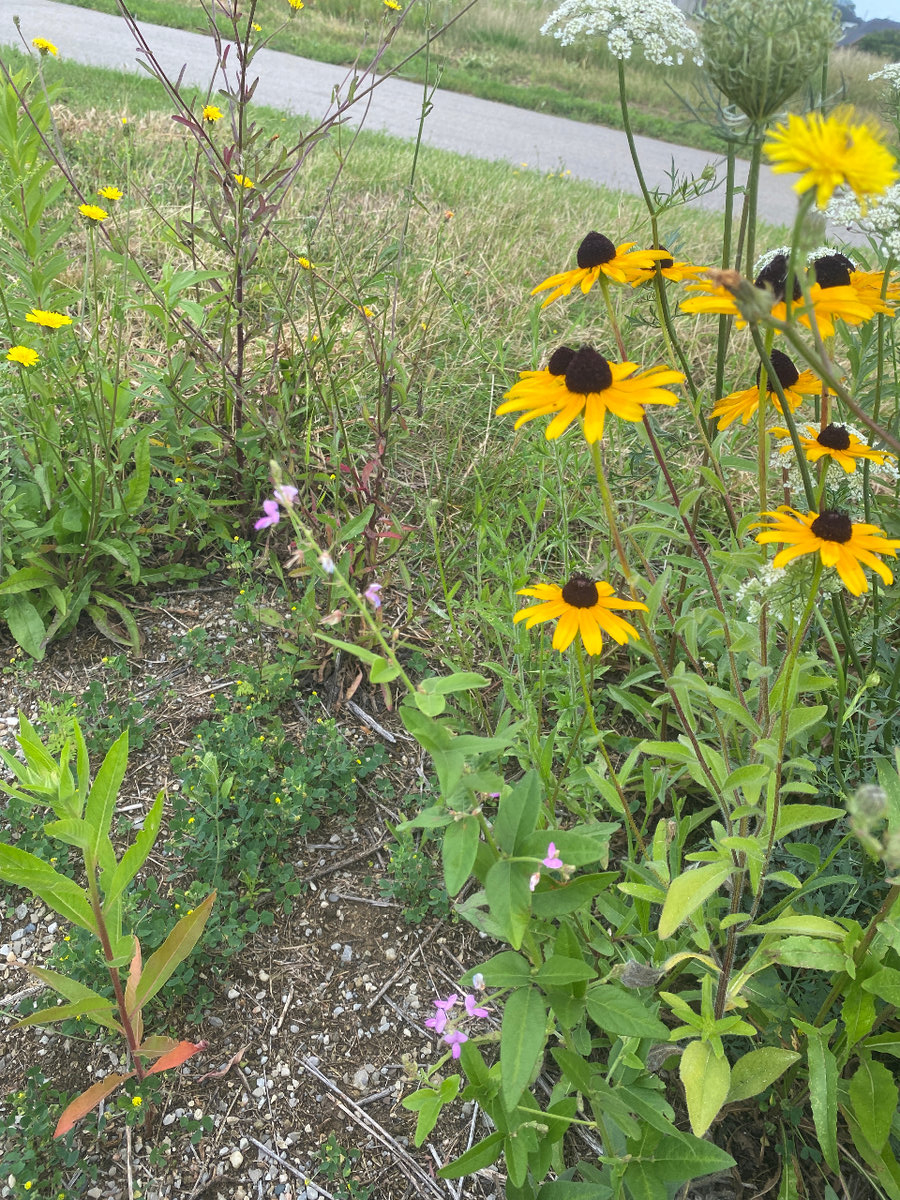 There is no doubt that planting native plants in your garden has a large number of benefits including:
There is no doubt that planting native plants in your garden has a large number of benefits including:
However, there are a few things to consider when wanting to add some native plants to your garden.
Planning:
1. You’ll first want to characterize the garden site that you will be working with.
What kind of soil do you have?
This will help guide you to what kinds of native plants will do well in your area so that you can match the right plant to its required conditions.
It may also be beneficial to research what kind of plants existed on the area before development to get a sense of what will do well. By filtering the species profiles of various native plants on Network of Nature, you can get information on their native ranges as well as their moisture, soil and sun requirements.
2. Once you have characterized your area, it is often helpful to draw up a simple garden plan to help decide where plants will go, keep track of any changes to the original garden design, and visualize what the end result will look like. You may want to consider:

3. Next, you may need to prepare the soil at the site for planting. If you matched your plant selections to the soil type that you already have, you probably won’t need to make too many adjustments to the soil. If there are no plants currently present, or the soil is unsuitable (rocky or clay-based soils are not very good for any plants), compost and/or manure may need to be added to improve nutrient content.
4. Remember to start slow. Plant a few native plants in your garden in the first year and see how they do. Assess blooming gaps and if soil conditions differ from year to year. Add or remove based on pollinator/animal needs and your own capabilities. Ideally, you should have a good mix of species that bloom in spring, summer, and fall to provide the most benefit to local pollinators.
Pollinator & Wildlife Promotion:
1. Try to have blooms all season long to maintain a steady food source/shelter for wildlife.
2. Leave plants up for winter. Not only can they add some beauty to a dull winter landscape, but they can provide critical habitat for animals during the winter months.
3. Cluster the same species into small groups (about 5 individuals) to attract pollinators.
4. There is no need to remove all the plants already established in your garden, look for gaps and mix the native species into what is already there. This way, you are creating more diversity and only adding additional food sources, not taking any away. The exceptions to this are aggressive non-native (invasive) species like Periwinkle, English ivy, or Japanese barberry that will crowd out other species. These should be handled following the appropriate best management practices to make the area more suitable for planting.
With these tips in mind, head over to the Network of Nature species page and discover a world of native plants suitable for your yard! With a free account, you can save a custom species list perfect for keeping track of everything you plan to add to your garden, and then find what local nurseries sell native species near you using our Native Plant Nursery Map!
References & Additional Resources:
What to know about starting your first native plant garden
Your guide to gardening with native plants
Written by: Summer Graham
Do you spend hours each week mowing your lawn to keep it maintained? Are you tired of spending money on herbicides to keep weeds at bay, or fertilizers to keep grass growing? Do local water use restrictions stop you from watering your yard, leaving it dry, brown and crispy in the summer? If you answered “yes” to any of these questions, a naturalized yard might be 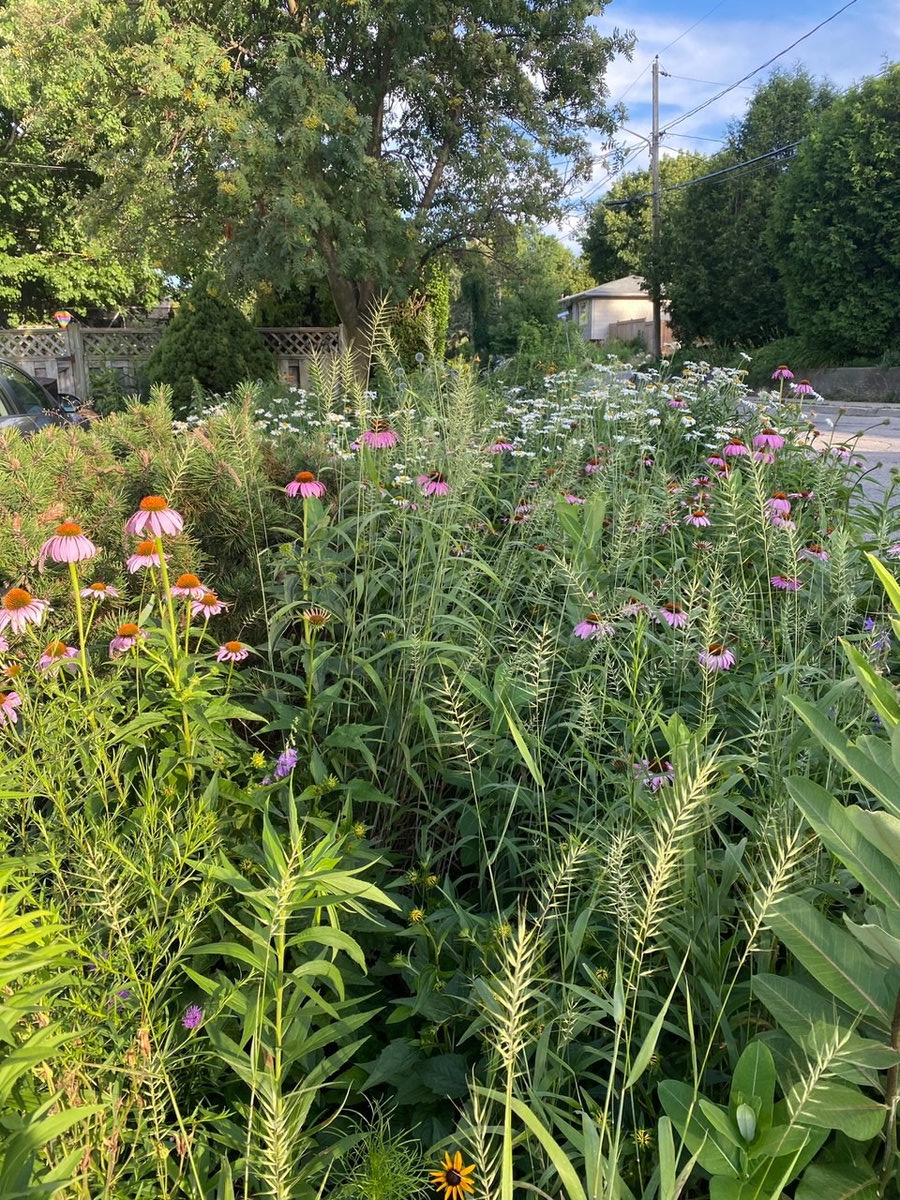 for you!
for you!
Naturalization is more than just “letting your yard go”, it’s a way of
reducing the amount of effort needed to maintain an area by replacing a manicured lawn with native plants that are allowed to grow naturally. Native plants are selected and planted in a way that mimics naturally occurring habitat (e.g. woodland, wetland, or prairie), and the end result can provide a wide variety of benefits, including:
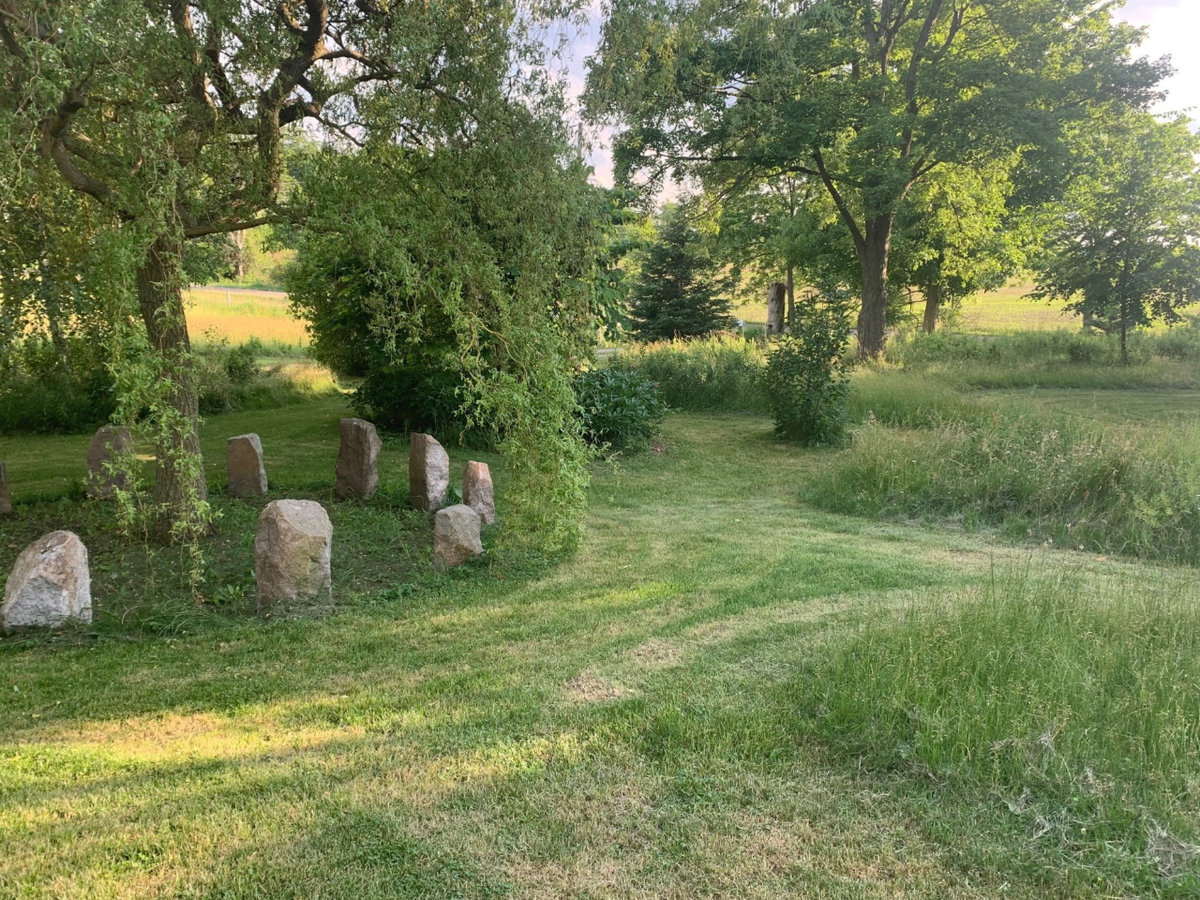 As mentioned before, naturalizing your lawn is more than just not mowing it. So, what if you lack the resources or time to fully naturalize your yard, but you still want to replace some of your lawn? Most people aren’t ready to completely give up the benefits and ease of a low, consistent ground cover, or maybe they can’t naturalize the front of their yard due to local restrictions. Luckily, there are plenty of native species that can be substituted for grass! These species can be substituted for lawn and will remain fairly short and low to the ground, maintaining the open, clean look a grass lawn provides. Native sedge species are particularly easy and attractive grass replacements, forming dense, soft mats perfect for lounging or playing frisbee on!
As mentioned before, naturalizing your lawn is more than just not mowing it. So, what if you lack the resources or time to fully naturalize your yard, but you still want to replace some of your lawn? Most people aren’t ready to completely give up the benefits and ease of a low, consistent ground cover, or maybe they can’t naturalize the front of their yard due to local restrictions. Luckily, there are plenty of native species that can be substituted for grass! These species can be substituted for lawn and will remain fairly short and low to the ground, maintaining the open, clean look a grass lawn provides. Native sedge species are particularly easy and attractive grass replacements, forming dense, soft mats perfect for lounging or playing frisbee on!
| Graminoid Species | |
Pennsylvania Sedge(Carex pensylvanica)
|
|
Ebony Sedge(Carex eburnea)
|
|
Rosy Sedge(Carex rosea)
|
|
| Woody Species | |
Creeping Juniper(Juniperus horizontalis)
|
|
Bunchberry(Cornus canadensis)
|
|
Bearberry(Arctostaphylos uva-ursi)
|
|
Wintergreen(Galutheria procumbens)
|
|
| Other Native Options | |
Woodland Strawberry(Fragaria vesca)
|
|
Barren Strawberry(Geum fragarioides)
|
|
Common Cinquefoil(Potentilla simplex)
|
|
Native Mosses
|
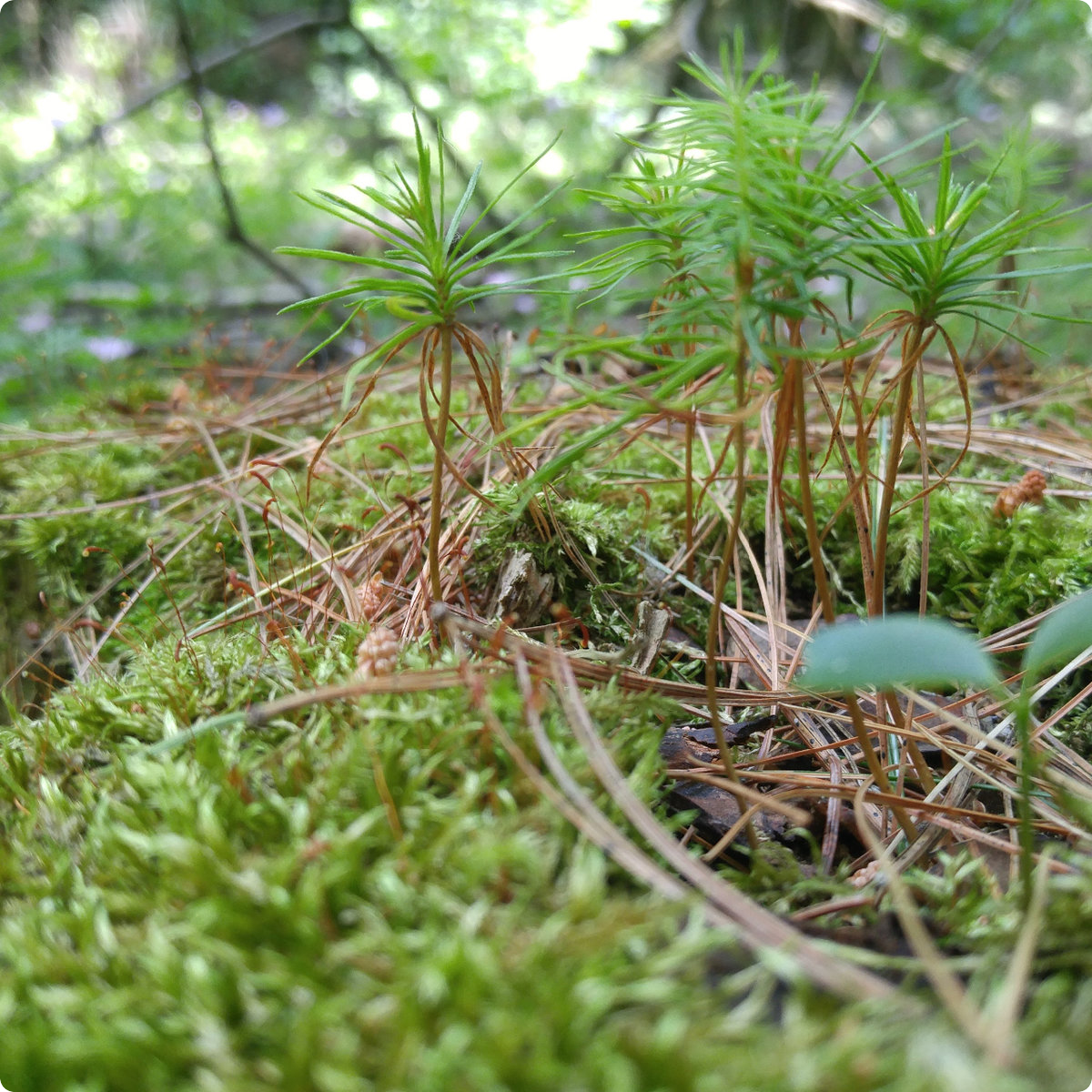 |
Advice from our staff with natural yards:
Heather – “I find the best method [for naturalization] is to put cardboard overtop of grass and then cover with leaves and/or mulch. The dying grass contributes nitrogen and the cardboard adds carbon. I cut into the cardboard and plant right into it. “
Zack – “I’m a big fan of Strawberry as a groundcover for lawn replacement. I’ve got a big patch of Fragaria vesca that has taken over a shaded section of my lawn. My Carex pensylvanica is also creeping out of my garden in to the shaded lawn areas and will probably outcompete grasses in these spots.”
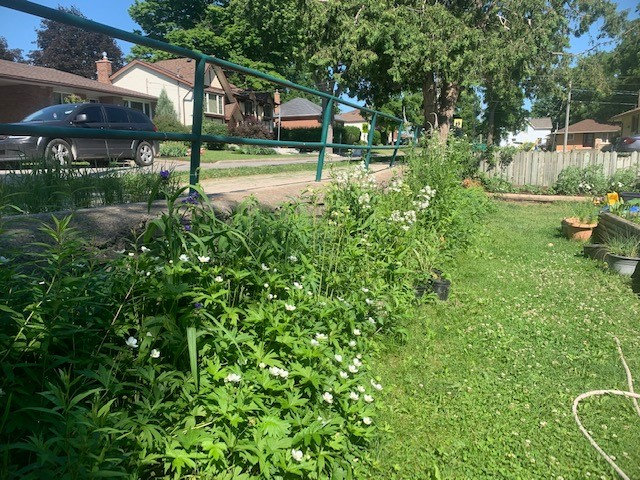 Jim – “Stopping mowing or abandoning cultivation is one route [to lawn naturalization] but it generally triggers a 2-3 year burst of annual/biennial ‘weeds’ (lots of clovers, Dandelions, Queen Anne’s Lace, Evening Primrose, Canada and Bull Thistles, Common Milkweed, Oxeye Daisy, Black Medic and Bird’s-foot Trefoil) until the Goldenrods get established and spread, which they will do just about anywhere in southern Ontario whether in urban backyards or in hardscapes. Most people are fearful of letting things succeed naturally, so amending with seed mixes containing some favorite native wildflowers is worthwhile but doesn’t eliminate the weedy cycle.
Jim – “Stopping mowing or abandoning cultivation is one route [to lawn naturalization] but it generally triggers a 2-3 year burst of annual/biennial ‘weeds’ (lots of clovers, Dandelions, Queen Anne’s Lace, Evening Primrose, Canada and Bull Thistles, Common Milkweed, Oxeye Daisy, Black Medic and Bird’s-foot Trefoil) until the Goldenrods get established and spread, which they will do just about anywhere in southern Ontario whether in urban backyards or in hardscapes. Most people are fearful of letting things succeed naturally, so amending with seed mixes containing some favorite native wildflowers is worthwhile but doesn’t eliminate the weedy cycle.
Also, it is worth mentioning that most meadows eventually attract woody species (native and non-native) as meadow is not normally a permanent state here, and intervention (i.e. at least one annual mowing) is required to keep these species in check. The speed that woody species move in depends on available seed sources, which aren’t always of desirable species in urban areas, and increasingly are dominated by Buckthorn.”
When searching the Network of Nature database for good groundcover species for your yard, select your province in Native Rage and then “ground cover” under Growth Form. If you have any furry friends or young children that like to play in your yard, be sure to do a little more research and use native species known to be non-toxic to kids and pets!
Resources and more reading
Naturalized Lawns Reduce Need for Mowing and Trimming
Edmonton Pushing for Lawns to Go Natural
Groundcovers and Lawn Alternatives
Gardening with Native Plants – BC
Join our email list to receive occasional updates about Network of Nature and ensure you get the news that matters most, right in your inbox.